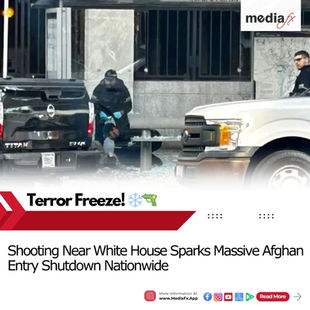🎥✨ "Stars, Stampedes, and Blame Games: Time to Set Accountability Straight!" 🌟👥
- Kapil Suravaram

- Dec 14, 2024
- 6 min read
TL;DR: Celebrities and film events often become chaos zones, especially when things like star-power antics and unplanned crowd management collide. The Sandhya Theatre stampede tragedy has raised critical questions about accountability, but the focus has shifted from fixing root problems to distracting debates. Arresting an actor isn’t enough—organizers and authorities need to be held accountable, and sustained public pressure is key to ensuring justice and safety.
In the glittery world of #Celebrities ✨ and movie madness 🎥, there's always a stage for drama—sometimes, literally. If you've ever been to a public event featuring stars 🌟 or a big-ticket film 🎞️ release, you’ll know what I mean. Crowd frenzy, poorly timed entries, and chaotic management can make these events feel like danger zones.
When there's money 💸 and buzz 📰 riding on a film release, it's fascinating how everything runs like clockwork. Every second is calculated, every move is measured. But at public gatherings? The rules seem to vanish into thin air. Often, celebs turn up fashionably late ⏰—whether by their own choice or the organizers’—to flaunt their "power." This deliberate chaos creates a dangerous crowd environment, risking lives to make headlines.

🚨 Sandhya Theatre: A Tragedy, A Missed Opportunity
The tragic stampede at Hyderabad’s Sandhya Theatre 💔 during a fan event is a painful reminder of how human lives are treated as collateral damage in the name of hype. But instead of digging deep into who is responsible, the debate has spiraled into a blame game. Arresting the actor involved was a move that grabbed media attention 📸 but did nothing to address systemic failures.
Why haven’t the organizers been held accountable? Why didn’t the police act proactively to ensure crowd safety? These are the real questions 🤔, and they’ve been conveniently ignored.
Let’s face it—over time, public memory will fade 🕒, and the case will get buried under the next wave of trending news. But for the family that lost their loved one, this isn't something they can simply move on from. They deserve justice ⚖️ and answers that could prevent future tragedies.
💡 What Needs to Change?
Here’s the bitter truth: tragedies like these will keep happening unless we demand change 🚨. Here’s what needs to happen:
1️⃣ Accountability for Organizers: Event managers and production houses must be made legally and morally accountable for public safety. Stampedes aren’t "freak accidents"; they’re failures of planning and crowd control.
2️⃣ Proactive Policing: Authorities need to set strict safety protocols for any event involving large crowds. Suspension and penalties for negligent officers should be the norm, not the exception.
3️⃣ Celebrities as Role Models: Stars should own their responsibility in creating safe environments for fans. Arriving late for dramatic effect 🎭 might boost their "image," but it costs lives.
4️⃣ Media’s Role: Instead of focusing on sensational arrests or clickbait blame games, journalists should investigate root causes and ensure public pressure remains high.
💬 Keep the Pressure On!
This isn’t just about one tragedy; it’s about breaking a pattern 🚨. Fans, journalists, and activists need to keep asking tough questions:
Are events being planned with safety in mind?
Is there enough accountability from both organizers and law enforcement?
Are we letting big names distract us from real justice?
Only sustained public pressure ✊ and social media conversations 📱 can keep the spotlight on these issues.
🛑 Stop Making Public Lives Expendable!
Theatrics and drama are for the screen, not real life. Public events shouldn't feel like survival zones 🆘. The industry, the police, and the audience need to come together to demand accountability and ensure no family suffers such irreversible losses again.
So, what’s your take? Drop your comments 👇 and let’s keep this dialogue alive. Together, we can make sure “star power” doesn’t come at the cost of innocent lives. 💔 From Bollywood to Hollywood and beyond, public events featuring stars have often led to chaos and tragedies. The Sandhya Theatre stampede is just the latest in a pattern of preventable incidents caused by poor crowd management and over-the-top publicity stunts. While some countries have implemented strict rules to manage such events, India still lags in enforcing accountability. It’s time for the film industry, authorities, and fans to prioritize safety over spectacle.
Film industries worldwide 🌏 thrive on the glitz and glamour of public events—whether it’s star-studded premieres, fan meet-and-greets, or promotional rallies. But beneath the glitter lies a darker truth: the safety of common people is often an afterthought. In India, the tragic stampede at Hyderabad’s Sandhya Theatre during a fan event for a popular Telugu actor has once again highlighted this issue.
The incident isn’t an isolated one. Public events tied to film promotions have long been hotspots for chaos. Fans are treated as mere statistics, and tragedies are brushed under the carpet. Let’s unpack this problem and see how other countries have tackled similar challenges.
🎬 Stampede Incidents Across Film Industries
1️⃣ Bollywood’s Chaotic Promotions:Bollywood has seen its fair share of crowd mismanagement. In 2013, actor Shah Rukh Khan’s appearance at Vadodara railway station for a promotional event resulted in a stampede that left one person dead 💔. Despite the tragedy, accountability was limited to public apologies, and the cycle continued.
2️⃣ Hollywood’s “Safe” Image Isn’t Perfect:Even in Hollywood, where event planning is often meticulous, accidents happen. In 2011, a premiere for “Twilight” drew such massive crowds that several fans were injured 🩹. Lawsuits followed, pushing studios to rethink safety protocols.
3️⃣ South Korea’s Stricter Approach:South Korea’s Hallyu wave 🌊, driven by K-Pop and cinema, has faced similar issues. After a deadly crowd surge during a fan event in 2005, the government imposed stricter rules for public gatherings, including mandatory safety audits and crowd control training for event staff.
4️⃣ Japan’s No-Nonsense Policies:Japan 🇯🇵, known for its disciplined approach, requires event organizers to pre-submit crowd management plans to local authorities. Non-compliance can result in heavy fines or event cancellations 🚫, a model worth emulating.
5️⃣ India’s Repeated Failures:Despite multiple incidents, India has been slow to implement rules. Events continue to rely on ad-hoc arrangements, with no legal consequences for negligence. The Sandhya Theatre tragedy is a stark reminder of this gap in enforcement.
🌟 Why Do These Incidents Keep Happening?
The root causes of such tragedies are eerily similar across industries:
Overcrowding for “Star Power”: Organizers often oversell events or fail to cap the number of attendees, leading to dangerous crowd densities.
Last-Minute Chaos: Celebrities arriving late ⏰ or unplanned schedule changes disrupt the flow, creating confusion.
Lack of Safety Protocols: Poor barricading, inadequate exits, and untrained security staff make crowd surges inevitable.
Focus on Publicity, Not People: The drive for headlines 📰 often overshadows the need for proper planning.
🛡️ Lessons from Around the World: Rules That Work
Here’s what other countries are doing right, and what India can learn:
1️⃣ Mandatory Crowd Control Plans:In countries like Japan and Germany 🇩🇪, event organizers are required to submit detailed crowd management plans. These include evacuation routes, safety measures, and expected attendance figures.
2️⃣ Real-Time Monitoring:The UK 🇬🇧 mandates real-time monitoring of crowd density using drones or cameras 🎥. This helps authorities intervene before situations spiral out of control.
3️⃣ Trained Event Staff:South Korea ensures all large-scale event staff undergo crowd control training. In India, untrained private guards often manage massive crowds.
4️⃣ Strict Penalties:In the US, lawsuits and hefty fines deter negligence. Event organizers face severe repercussions if safety is compromised 💵.
5️⃣ Licensing and Audits:In Singapore, events without proper safety licenses are shut down. Regular audits keep organizers on their toes.
🇮🇳 India Needs to Catch Up
The Sandhya Theatre tragedy should have been a turning point, but the focus quickly shifted from fixing systemic flaws to arresting an actor involved in the event. This reactive approach diverts attention from the root cause: lack of accountability.
Organizers Must Be Held Responsible: They profit the most from such events and should bear legal and moral accountability.
Police Need to Step Up: Local authorities must enforce safety standards rigorously and proactively.
Fans Deserve Better: It’s time to question the culture that risks fan safety for momentary spectacle.
🔗 Bridging the Gap: Industry and Government Collaboration
The film industry and the government must collaborate to create a robust framework for public events. Here are some steps:
1️⃣ Unified Guidelines: Develop national-level guidelines for crowd safety at all events.2️⃣ Public Safety Committees: Establish committees to review event plans before granting permissions.3️⃣ Celebrity Responsibility: Encourage stars to advocate for safe fan interactions.
💬 The Role of Public Pressure
Fans and the public have a significant role to play. Sustained pressure 📢 through petitions, social media campaigns 📱, and community dialogues can push stakeholders toward accountability. Highlighting incidents like Sandhya Theatre and refusing to let them fade from memory is crucial.
🚦 The Way Forward
Star power 🌟 should uplift, not endanger. Public events are an opportunity to connect with fans, not create tragedies. The onus is on the film industry, event organizers, and authorities to ensure that the safety of fans is never compromised again.
What do you think? Should India adopt global safety standards for public events? Share your thoughts in the comments 👇 and let’s keep the conversation alive!













































